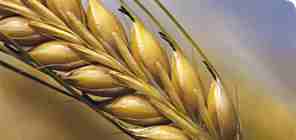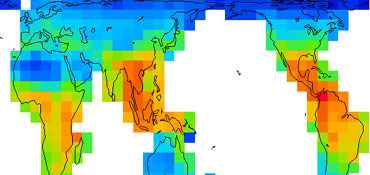IRAN's Biodiversity Information Management System BiodiversityDB  | ||||
 | ||||
| ||||
| ||||||||||
| You are here : Home > What's Biodiversity Biodiversity The term biodiversity describes the variety of life on Earth, from micro-organisms to mighty whales, along with the habitats they depend upon. Discover why the world’s biodiversity is under threat and what will happen to us as biodiversity decreases. Also, find out about the problems that come with trying to measure it, and how the Museum’s work is helping in the study and conservation of biodiversity.  Introduction to biodiversityWhat is biodiversity, what are the threats and what is the Museum doing to help conserve biodiversity?
 Biodiversity is a fundamental part of the Earth's life support system. It supports many basic natural services for humans, such as fresh water, fertile soil and clean air. Biodiversity helps pollinate our flowers and crops, clean up our waste and put food on the table. Without it we would not be able to survive. The term biodiversity should also remind us that no one organism lives in isolation. The many different ways that the millions of organisms on the Earth interact with each other contributes to the balance of the global ecosystem and the survival of the planet. Biodiversity plays a role in regulating natural processes such as the growth cycles of plants, the mating seasons of animals, and even weather systems.
Biodiversity is a fundamental part of the Earth's life support system, without it we would not be able to survive.  The world's biodiversity is under threat from a range of different dangers, the majority of which have been caused by humans. Pollution is poisoning plants and animals both on land and in the sea. Over the past 25 years species have been disappearing in alarming numbers, and many previously common species are also declining.Climate change brought about by emissions of greenhouse gases is making life uncomfortably hot for some species and uncomfortably cold for others, and the demand for space for farms, cities and roads threatens many unique ecosystems with destruction. The current estimate is that extinction is one thousand times the natural rate, and this high extinction rate is almost entirely caused by human activity. The world's biodiversity is under threat from a range of different dangers, the majority of which have been caused by humans.
Scientists at the Museum and in many other research centres are still discovering new species, all of which play a role in the global ecosystem.
Researchers generally accept three levels of biodiversity: genetic, species, and ecosystem. These levels are all interrelated yet distinct enough that they can be studied as three separate components. Some researchers believe that there are fewer or more levels than these, but the consensus is that three levels is a good number to work with. Most studies, either theoretical or experimental, focus on the species level, as it is the easiest to work on both conceptually and in practice.
Are we in crisis?What will our quality of life be like as species go extinct, human populations continue to grow and resources become scarce?
"Biodiversity" is often defined as the variety of all forms of life, from genes to species, through to the broad scale of ecosystems (for a list of variants on this simple definition see Gaston 1996). "Biodiversity" was coined as a contraction of "biological diversity" in 1985, but the new term arguably has taken on a meaning and import all its own. A symposium in 1986, and the follow-up book BioDiversity (Wilson 1988), edited by biologist E. O. Wilson, heralded the popularity of this concept. Ten years later, Takacs (1996, p.39) described its ascent this way: "in 1988, biodiversity did not appear as a keyword in Biological Abstracts, and biological diversity appeared once. In 1993, biodiversity appeared seventy-two times, and biological diversity nineteen times". Ten years further on, it would be hard to count how many times "biodiversity" is used every day by scientists, policy-makers, and others. While the history of this term is relatively short (compare it to other terms covered in this encyclopedia), it already has raised important, distinctive, philosophical issues. Some of these are entangled in the very definition of "biodiversity", an issue treated in the first sections below. A challenge is the reconciliation of process-based and elements-based perspectives on biodiversity. Overall, the major issue for biodiversity is how its conservation may be integrated with other needs of society.
By Paul Williamsproblems with measuring biodiversity and a solution to this important issue.  Global biodiversity value: a map showing the distribution of some of the most highly valued terrestrial biodiversity world-wide, with red for high biodiversity and blue for low biodiversity. Quantifying biodiversity is a philosophical issue because biodiversity can be seen as encompassing the entire and irreducible complexity of life. Paul Williams of The Natural History Museum, London, evaluates a number of theoretical approaches to measuring biodiversity and introduces Worldmap, unique computer software developed at the museum, which offers an alternative solution to this important problem. |
|